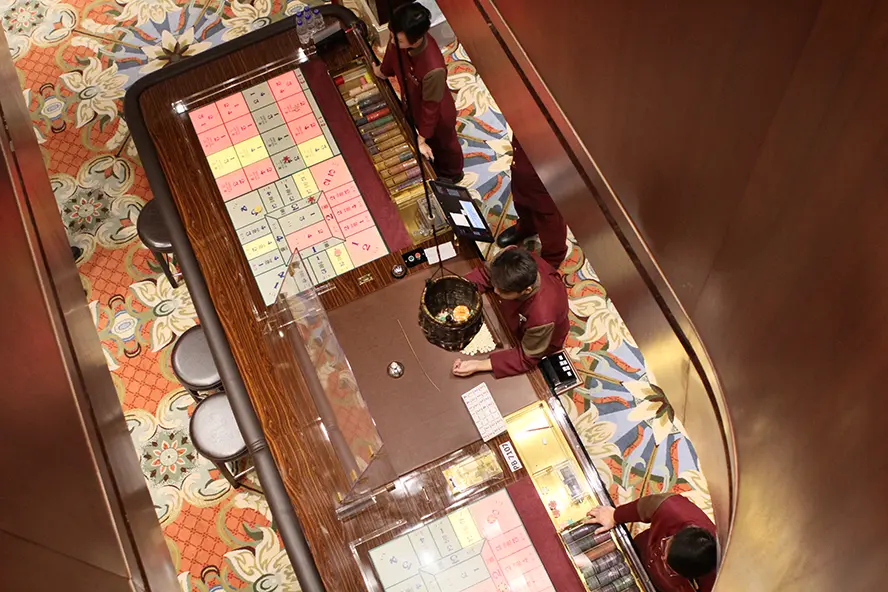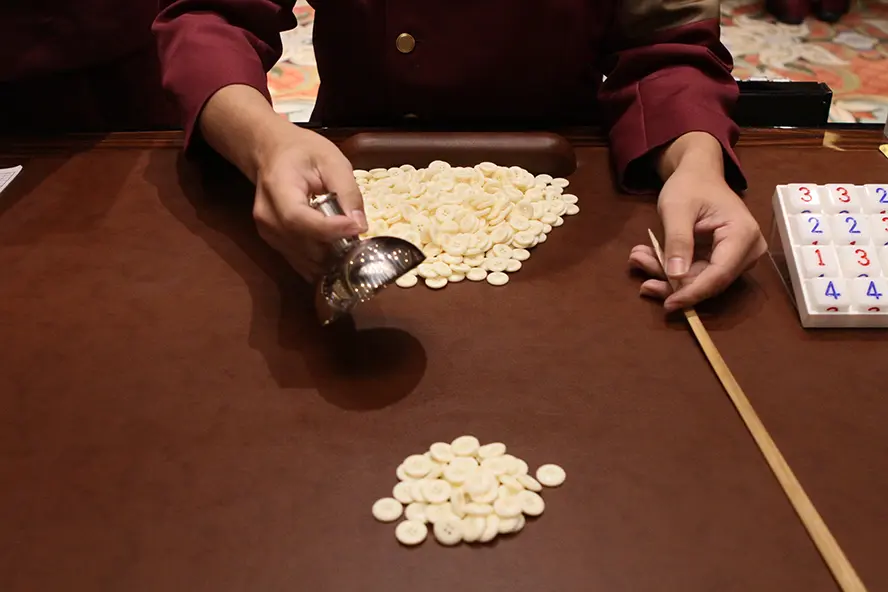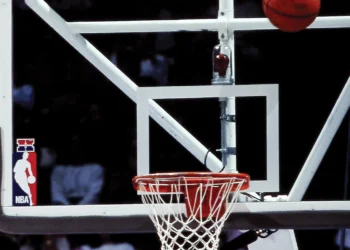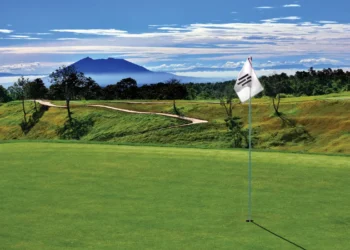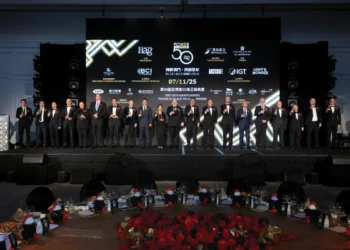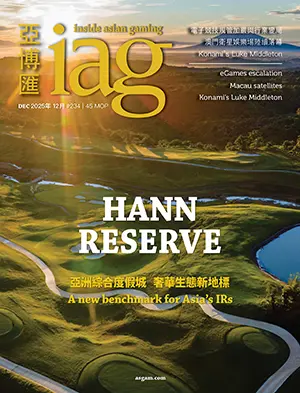In the first of a two-part series, Ryan Ho explores how gaming innovations and market changes have shaped the prominence of baccarat in Macau’s gaming industry.
Macau casinos have long been synonymous with baccarat. The evolution of Macau’s gaming industry is closely correlated with the development of its casino gaming offerings, particularly the game of baccarat. As Macau has grown into the world’s leading gaming market, baccarat has emerged as the dominant casino game, significantly influencing the economic and cultural landscape across the global gaming industry.
Fantan-stic time
Over the decades, baccarat has dominated both the mass and premium segments in Macau casinos. Its enduring popularity stems from its straightforward rules, fast-paced nature and relatively low house edge. This card game was first introduced to Macau in the late 1930s by the then-concessionaire, marking the beginning of what would become the city’s most iconic casino game.
Yet baccarat’s attainment of its modern form and current widespread recognition took time. Before STDM was granted the casino monopoly in 1962, the Chinese game fantan had been the most popular in Macau.
 From fantan to baccarat
From fantan to baccarat
Macau overhauled the casino regulatory system in 1961. Specifically, Legislative Regulation No 1496 (Diploma Legislativo n.º 1496) played a pivotal role in shaping Macau’s modern gaming industry by distinguishing “games of fortune (chance)” from illegal gambling and establishing a legal framework for casino gaming. Among its provisions, several variants of the baccarat game were legalized under this gaming legislation; notably, baccarat (Chemin de fer) was permitted for operation in casinos.
Similar to Pai Gow, Chemin de fer (“railway” in French) is named for the way the banker role moves around the table, resembling a train traveling along a track. This baccarat variant features a rotating banker position among players, which is why it was initially translated into Chinese as “Western Pai Gow”. As for the “modern” form of baccarat, the Punto Banco variant – the most widely played version in worldwide casinos – first officially appeared in Legislative Regulation No 13/72 in 1972.
Baccarat: Punto Banco vs Chemin de Fer
Baccarat is a popular casino card game with several variants. Two of the most well-known are Punto Banco and Chemin de fer.
Punto Banco
- A simplified variant widely played in Macau and worldwide casinos.
- Players can bet on Punto (Player), Banco (Banker), or Tie.
- The dealer controls all actions, following a fixed set of drawing rules.
- A purely chance-based game with no player involvement beyond betting.
Chemin de Fer “Chemmy”
- One of the oldest versions of baccarat once popular in European casinos.
- Players take turns being the banker, meaning they deal and cover bets.
- Unlike Punto Banco, players can choose whether to draw a third card.
- Chemin de fer involves an element of skill and strategy, as players can make decisions on drawing cards.
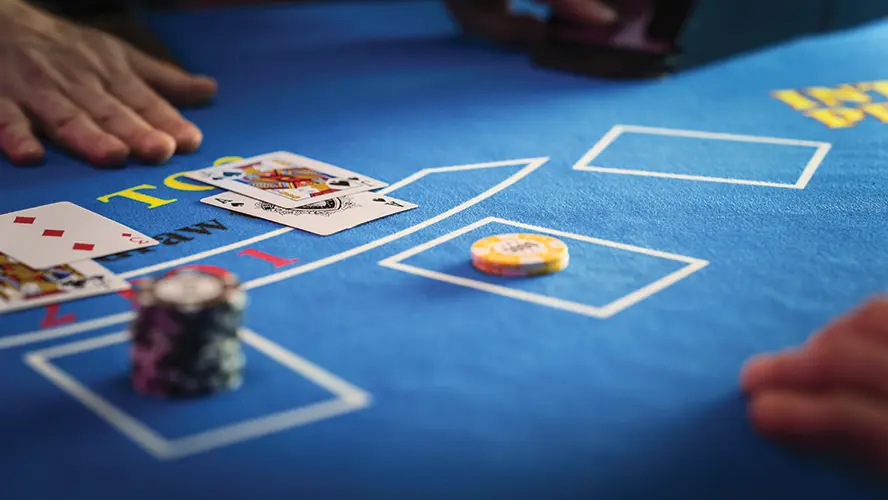
Baccarat taking off
Baccarat gained huge popularity during the STDM concession period (1962–2002), gradually eclipsing fantan to become the most sought-after game on casino floors and in VIP salons. After the gaming industry was liberalized in 2002, Macau revoked its previous baccarat regulations and standardized the rules for baccarat and other casino games in 2004. Since then, Punto Banco baccarat has undergone various updates, including the introduction of new betting options. Among these, no-commission baccarat, introduced in 2005, has strengthened this dominance, catering to evolving player preferences and operational strategies within Macau’s gaming industry.
Speeding up the game
Both baccarat and its VIP counterpart have accounted for a majority of the city’s gross gaming revenue (Table 1). One of the most significant shifts in the past decade has been the widespread deployment of no-commission baccarat tables in mass gaming halls. This variant has gained considerable traction among mass-market players. The introduction of this variant has changed operational strategies and dealer training across Macau casinos.
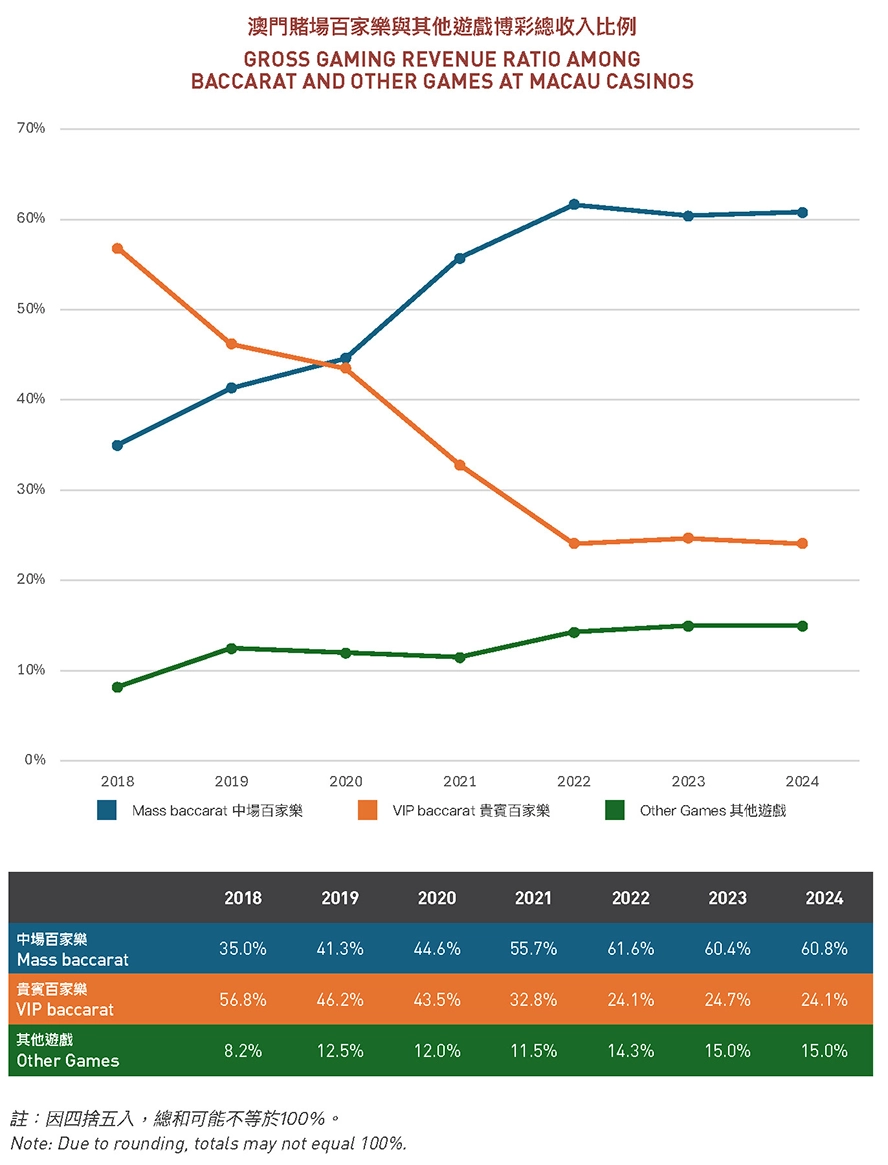 No-commission baccarat follows the same rules as traditional baccarat, with one key difference: the standard 5% commission on Banker wins is removed. Instead, winning Banker hands with a point count of “6” only pay 50% of the wager. This adjustment not only streamlines payouts but also reduces the training required for novice dealers.
No-commission baccarat follows the same rules as traditional baccarat, with one key difference: the standard 5% commission on Banker wins is removed. Instead, winning Banker hands with a point count of “6” only pay 50% of the wager. This adjustment not only streamlines payouts but also reduces the training required for novice dealers.
The transition from traditional to commission-free baccarat represents a strategic shift in Macau’s gaming industry. This change is not just about further simplifying the game – it’s a strategic move to increase game speed, improve operational efficiency and attract more casual players. The icing on the cake is the slight yet meaningful improvement to the game’s house edge, making it an even more lucrative option for casino operators (Table 2).
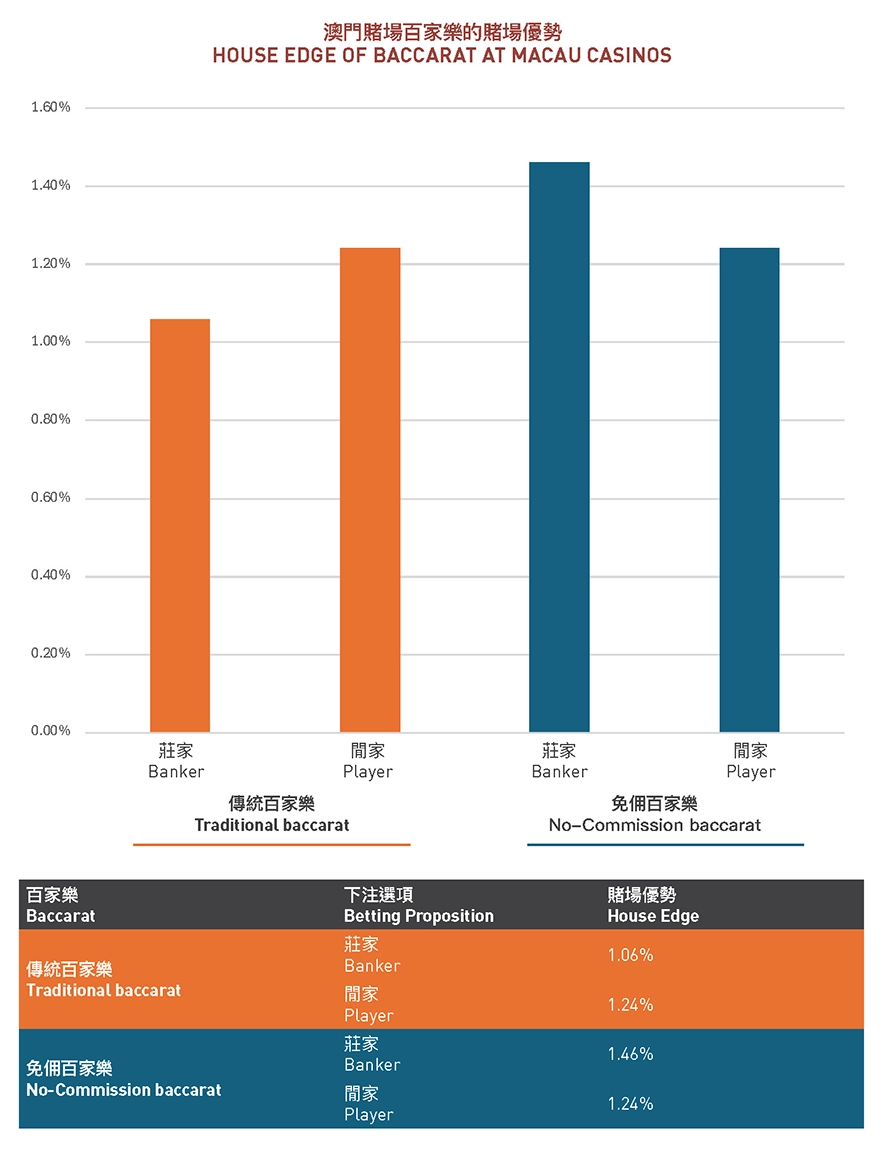 VIP gaming aside, no-commission baccarat has gradually become the standard variant in contemporary gameplay, particularly in the mass market. Some casinos in Europe even refer to the no-commission variant as “Macau baccarat” to highlight its association with Macau and the city’s cultural identity as a premier destination for gaming and entertainment.
VIP gaming aside, no-commission baccarat has gradually become the standard variant in contemporary gameplay, particularly in the mass market. Some casinos in Europe even refer to the no-commission variant as “Macau baccarat” to highlight its association with Macau and the city’s cultural identity as a premier destination for gaming and entertainment.
Baccarat as the chosen game
Why is baccarat the preferred game? Although players are typically perceived as irrational, they still tend to operate within the framework of bounded rationality, making decisions based on limited information and cognitive constraints. Compared to other casino games, baccarat stands out due to its lower house edge and straightforward rules, which may appeal to players seeking a balance between risk and potential reward (Table 3).
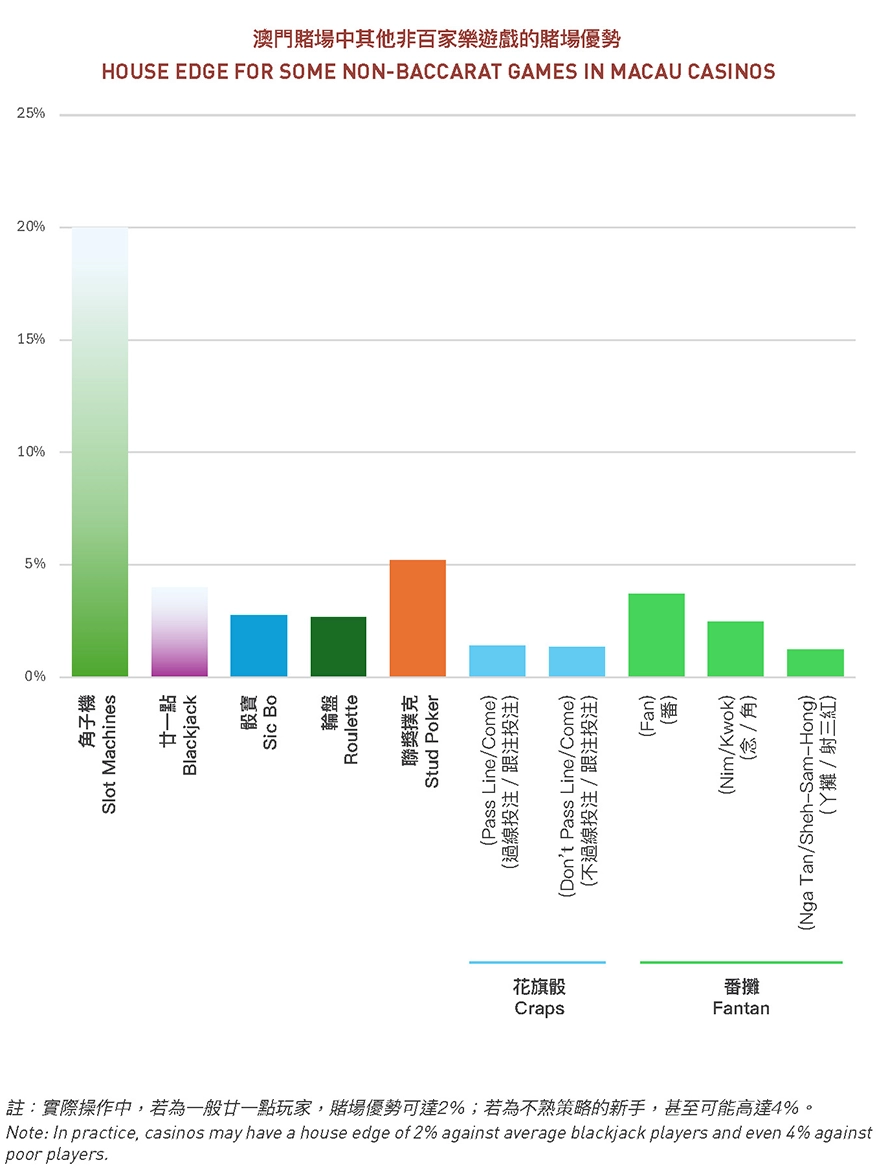 In contrast to games such as blackjack, where players must learn basic strategies or even engage in card counting to optimize their chances of winning, baccarat relies entirely on luck, requiring minimal strategic decision-making. This strong element of luck may attract players who prefer a game where outcomes are determined by fate rather than skill, making baccarat mostly appealing to those who enjoy testing their luck. These factors contribute to baccarat’s popularity among Asian players.
In contrast to games such as blackjack, where players must learn basic strategies or even engage in card counting to optimize their chances of winning, baccarat relies entirely on luck, requiring minimal strategic decision-making. This strong element of luck may attract players who prefer a game where outcomes are determined by fate rather than skill, making baccarat mostly appealing to those who enjoy testing their luck. These factors contribute to baccarat’s popularity among Asian players.
 Beating the casino
Beating the casino
Casinos should be viewed as a form of recreation. Much like amusement parks, visitors to Disneyland pay an entrance fee for a story-driven experience. Casino players can consider the house edge – or the expected theoretical loss – as an admission ticket for entertainment and the dream of becoming a millionaire overnight. By adopting this perspective, players may approach gaming with a more realistic mindset, recognizing that the primary purpose is enjoyment rather than financial gain.








